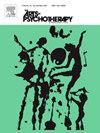Arts therapies and people with visual impairment: A scoping review
IF 1.5
3区 心理学
Q3 PSYCHOLOGY, CLINICAL
引用次数: 0
Abstract
People with visual impairment (VI) can benefit from arts therapies (AsTs); however, this area has not been systematically reviewed, and the differences in the application of various artistic modalities and related arts-based interventions (art therapy, music therapy, drama therapy, dance/movement therapy, bibliotherapy and expressive writing) have not been thoroughly described. The aim of this paper is to: 1) map research studies on AsTs and related interventions in the therapy and rehabilitation of people with VI, and 2) identify the therapeutic effects, specific features, and necessary adaptations of AsTs for people with VI. All procedures, including the prospective publication of the protocol, search of relevant information sources, data collection and data extraction, were conducted in accordance to the JBI methodology for scoping reviews. A total of 89 relevant studies were identified, primarily in the areas of music therapy/medicine and art therapy. The reported effects of AsTs and related interventions address psychological/mental health, functioning, social and communication skills, and quality of life. Specific objectives, such as research on physiological functions or pain/anxiety management, were identified in the field of music medicine. Multimodality and the use of various adaptations are characteristic features of AsTs practice for people with VI. Current research studies describe the potential of AsTs and related interventions for people with VI; however, research on the some AsTs modalities is scarce. Future development of AsTs may focus on the therapy of visual functions and other goals specific to this population. This is the first scoping review on AsTs and related interventions for people with VI. Based on thorough searches in databases and grey literature, it provides an up-to-date map of the field. Additionally, this review compares different artistic modalities and offers an overview of potential adaptations that may be necessary in the therapeutic process. This review may be useful for the practice of art therapists and other rehabilitation professionals, including occupational therapists, special educators, clinical psychologists, nurses, vision therapists, social workers and social service workers, as well as for future research in this area.
艺术疗法和视力障碍患者:范围综述
视觉障碍(VI)患者可以从艺术治疗(ast)中受益;然而,这一领域尚未得到系统的回顾,各种艺术模式和相关艺术干预(艺术疗法、音乐疗法、戏剧疗法、舞蹈/运动疗法、阅读疗法和表达性写作)的应用差异也没有得到彻底的描述。本文的目的是:1)绘制在VI患者治疗和康复中ast及相关干预措施的研究图谱;2)确定ast对VI患者的治疗效果、具体特征和必要的适应性。所有程序,包括方案的前瞻性发表、相关信息来源的搜索、数据收集和数据提取,均按照JBI方法进行范围审查。总共确定了89项相关研究,主要集中在音乐治疗/医学和艺术治疗领域。据报道,ast和相关干预措施的影响涉及心理/精神健康、功能、社交和沟通技能以及生活质量。在音乐医学领域确定了具体的目标,例如研究生理功能或疼痛/焦虑管理。多模式和使用各种适应是VI患者的ast实践的特征。目前的研究描述了VI患者的ast和相关干预措施的潜力;然而,对某些ast模式的研究却很少。ast的未来发展可能会集中在视觉功能的治疗和其他针对这一人群的目标。这是第一次对VI患者的ast和相关干预措施进行范围审查。基于对数据库和灰色文献的彻底搜索,它提供了该领域的最新地图。此外,本综述比较了不同的艺术形式,并概述了治疗过程中可能需要的潜在适应。本综述可能对艺术治疗师和其他康复专业人员,包括职业治疗师、特殊教育工作者、临床心理学家、护士、视力治疗师、社会工作者和社会服务工作者的实践以及该领域的未来研究有所帮助。
本文章由计算机程序翻译,如有差异,请以英文原文为准。
求助全文
约1分钟内获得全文
求助全文
来源期刊

Arts in Psychotherapy
Multiple-
CiteScore
3.20
自引率
11.10%
发文量
66
期刊介绍:
The Arts in Psychotherapy is a dynamic, contemporary journal publishing evidence-based research, expert opinion, theoretical positions, and case material on a wide range of topics intersecting the fields of mental health and creative arts therapies. It is an international peer-reviewed journal publishing 5 issues annually. Papers are welcomed from researchers and practitioners in the fields of art, dance/movement, drama, music, and poetry psychotherapy, as well as expressive and creative arts therapy, neuroscience, psychiatry, education, allied health, and psychology that aim to engage high level theoretical concepts with the rigor of professional practice. The journal welcomes contributions that present new and emergent knowledge about the role of the arts in healthcare, and engage a critical discourse relevant to an international readership that can inform the development of new services and the refinement of existing policies and practices. There is no restriction on research methods and review papers are welcome. From time to time the journal publishes special issues on topics warranting a distinctive focus relevant to the stated goals and scope of the publication.
 求助内容:
求助内容: 应助结果提醒方式:
应助结果提醒方式:


